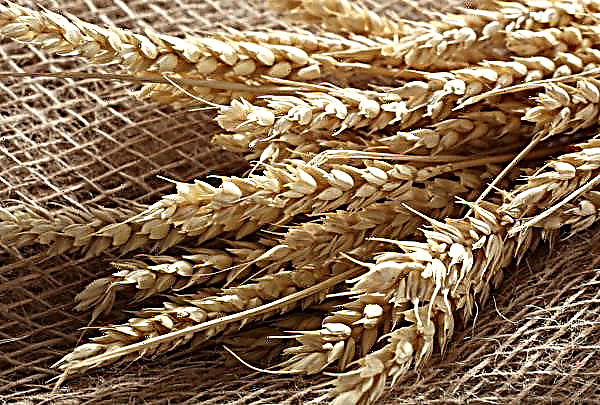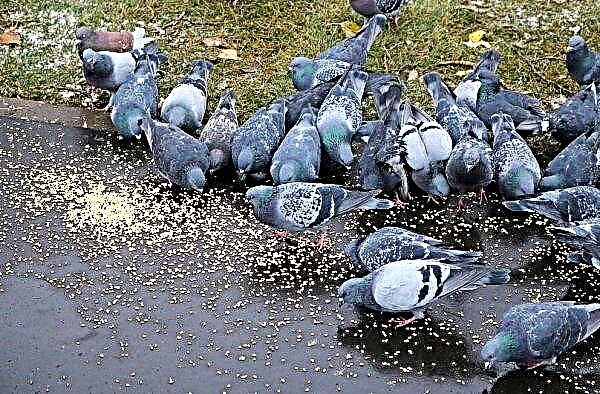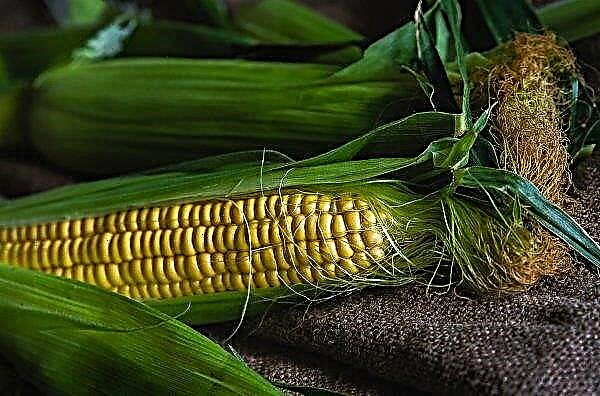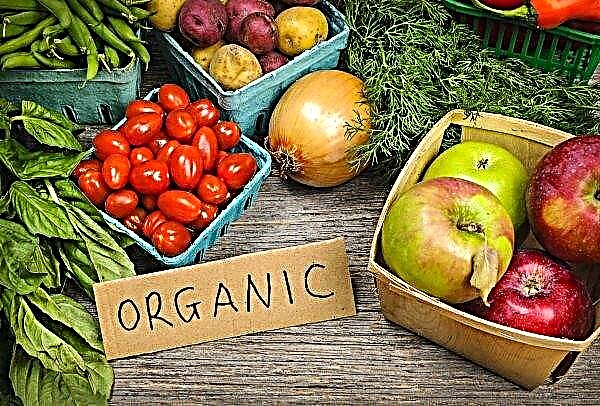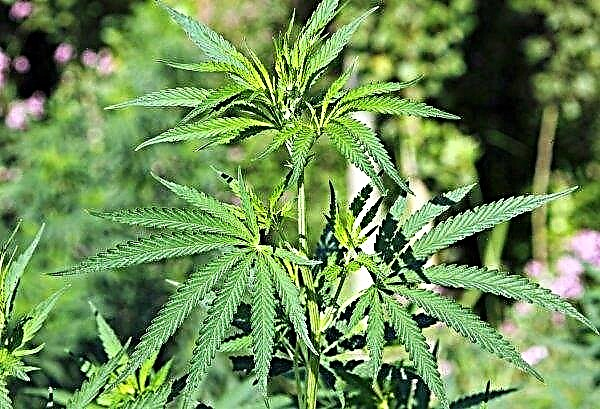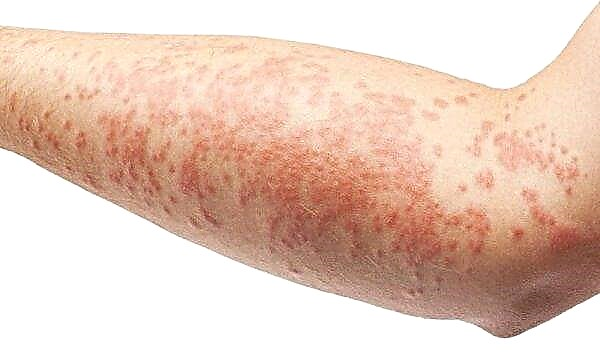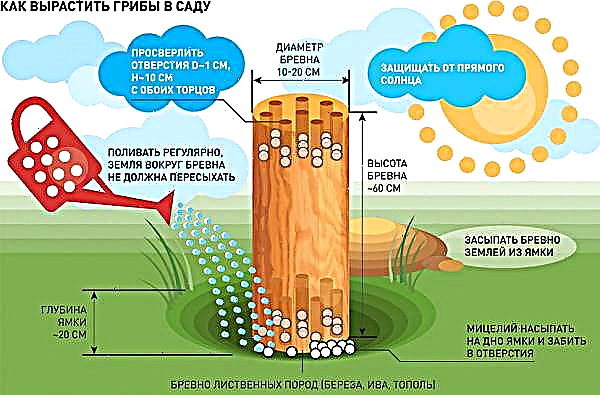Every self-respecting gardener simply cannot neglect the issue of caring for cultivated plants, therefore, methods of fertilizing tomatoes and strengthening their immunity will always be one of the priority issues. In this article, we propose to consider the option of treating tomato bushes with iodine whey, paying particular attention to the process of its preparation and features of use.
Plant iodine serum
What housewives surely know is iodine and milk whey, but only some gardeners know exactly how they affect tomatoes. In fact, both substances to one degree or another have a positive effect on plants, but for the integrity of the picture, one should not lose sight of the possible harm from such processing.
Benefit
The advantages of using whey with iodine should be evaluated in terms of the benefits of each individual drug: for example, iodine has a pronounced antimicrobial effect, and serum contains a whole set of micronutrients and substances that can replace immunomodulators in plants to strengthen the stem and root parts.
- But this is only the tip of the “useful iceberg” and the list of positive properties of the finished mixture is much wider, in particular, it includes:
- activation of seedling growth;
- pest and pathogen control;
- strengthening ovaries;
- treatment of tomatoes already infected with a fungus.
Did you know? An adult needs at least 100-150 micrograms of iodine per day, but many of us consume only 40-80 micrograms. To fill the shortage and improve the condition of the thyroid gland, fish and seafood will help - record holders for the content of this element.
Harm
Serum with iodine is highly safe, so the likelihood of harm to plants is very small. Problems can only arise if you go too far with iodine and it burns the delicate leaves of young seedlings, which, of course, cannot be allowed.
Features and basic rules of feeding
There is nothing complicated in the preparation and use of serum-iodine solution, and the rules for its use are mostly related to the frequency, dosage and specific processing time. First of all, it is worth considering that:
- To create a solution, only clean water at room temperature is suitable, which must first be mixed with serum and only then added iodine.
- Preventive spraying immediately after transplanting seedlings is a more effective method of preventing the development of an ailment than treating tomatoes on which well-visible spots have already appeared, so it is better to spray immediately after transplanting tomatoes into open soil.
- The intensity and number of treatments directly depends on weather conditions and the higher the humidity in the street, the more often you need treatment.
- You can increase the effect of the prepared composition with the help of other components, the main ones of which are ash and hydrogen peroxide.
 To achieve the maximum effect, it is better to alternate the root (for the first time it is performed when the second pair of true leaves appears) and foliar top dressing.
To achieve the maximum effect, it is better to alternate the root (for the first time it is performed when the second pair of true leaves appears) and foliar top dressing.When and how often can I feed tomatoes with iodine serum
The optimal solution to the question of the regularity of processing of tomato bushes will be the frequency of spraying once every 10 days, since it is for such a time that the film protection of serum is enough. However, in the presence of clearly visible manifestations of fungal diseases, the frequency of treatments can be increased up to 1 time in 5 days.
How to prepare a solution: a step by step recipe
In fact, the whole process of preparation of fertilizing based on serum and iodine is reduced to mixing the main components, the main thing is to choose the most suitable recipe. Let's consider several options.
Important! For each new treatment you need to prepare a fresh solution, even if you have left the mixture from the last time.
Proportions and components
Among the simplest and most affordable ingredients for the preparation of whey nutrition, serum itself, iodine, water and ash are distinguished, although in addition to them hydrogen peroxide, the drug Fitosporin and other components can be used. Consider a few popular recipes.
Option 1:
- water - 10 l;
- milk whey - 2 l;
- iodine - 10 drops;
- ash (provides an alkaline reaction and repels pests) - 2 tbsp. spoons.
Option 2 (well protects the plant from late blight):
- water - 10 l;
- serum - 1l;
- iodine tincture - 40 drops;
- hydrogen peroxide (3%) - 10 ml.
Video: how to prepare a solution with iodine and serum for processing tomato
Step-by-step cooking instructions
Regardless of the selected recipe, the sequence of all steps in the preparation of the working solution will be the same in all cases. The main stages of this process include:
- Preparation of clean containers and purified water at room temperature.
- Mixing water with whey.
- Addition of iodine and thorough stirring.
- Introduction to the rest of the components (ash, peroxide or brilliant green).
Important! With the simultaneous use of iodine and green greens, the latter should be less.
How to treat tomatoes with iodine serum
The method of processing tomato bushes with a serum-iodine solution directly depends on the age of the plant and its condition. In some cases, root dressing will be more appropriate, while in others it is possible to water only the leaves of the plant with a solution. Of course, the technology for performing work in each of them will have its own characteristics.
Seedlings
Spraying seedlings can begin from the moment the first true leaves appear, mixing milk whey with water in a 1: 1 ratio. The amount of iodine in this case should be minimal, and the treatment itself should be more frequent, since the effect of spraying does not last for a long time. The best time to complete the task is morning or evening hours when there is no scorching sun.
To apply the solution to tomato bushes, they usually use a spray gun or gauze folded in several layers, which will have to be wiped off each leaf. Strengthen the seedlings and maintain the effect for a long time will help the weekly procedure.
Did you know? In the XVIII century, whey was considered the main means for the renewal of youthful skin and even acted as one of the main pharmaceuticals prescribed to patients in specialized sanatoriums. With its help, they tried to cure tuberculosis, asthma and a stomach ulcer.
Adult plants
The root system of mature seedlings can increase the effectiveness of root dressing with a serum-iodine composition, therefore this treatment method is more often used after transplanting seedlings to a constant place of growth (in a greenhouse or in open soil). A strong root system absorbs nutrients better and transports them throughout the plant, and the gardener only needs to pour the prepared mixture under the bush. Some summer residents also use root dressing to fertilize very young plants, on which only a second pair of true leaves has appeared. The main argument in this case is the limited surface of the leaf plate of plants and greater efficiency in root treatment. No one forbids the use of both options, therefore, the most reasonable solution is to alternate the root and foliar methods of using serum-iodine solution for fertilizing tomatoes.
Some summer residents also use root dressing to fertilize very young plants, on which only a second pair of true leaves has appeared. The main argument in this case is the limited surface of the leaf plate of plants and greater efficiency in root treatment. No one forbids the use of both options, therefore, the most reasonable solution is to alternate the root and foliar methods of using serum-iodine solution for fertilizing tomatoes.
Additional recommendations
Sprinkling tomato bushes or pouring them under the root is not a difficult task, even a novice gardener can cope with it. However, the process will yield more results if you consider the following recommendations:
Recommended Reading

- In dry and windy weather, the best time to process tomatoes is early morning or late evening, when there is no scorching sun.
- During the rainy season, the regularity of the treatments should be increased by treating plants not once every 10 days, but once every 3-5 days.
- Serum with iodine can be applied to all parts of tomato bushes, especially paying attention to the lower surface of the leaves, since it is from this side that nutrients are absorbed best.
- Before processing tomatoes, it is advisable to loosen and remove weeds from under the bushes.
- In addition to the tomatoes themselves, it is important to cultivate the soil around the plants, as well as pay attention to the wooden supports, if the bushes are already tied.

